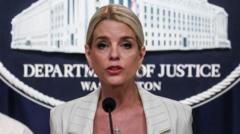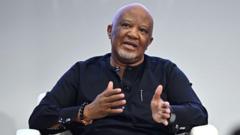The executive order reinstating single-sex prisons, which affects 1,500 male inmates identifying as female, aims to enhance safety for women but ignites critical discussions about gender identity and rights within the correctional system.
Trump Reinstates Single-Sex Prisons: Controversy Surrounds Executive Order on Gender and Safety

Trump Reinstates Single-Sex Prisons: Controversy Surrounds Executive Order on Gender and Safety
President Trump's new directive reversing transgender inmate policies has sparked debate over women's safety and rights in prisons.
In a significant policy shift, President Donald Trump has signed an executive order reinstating single-sex prisons, a decision that reverses previous regulations allowing male inmates identifying as women to be housed in female facilities. Reports from the New York Times indicate that this directive will lead to the relocation of approximately 1,500 male federal prisoners who identify as female back to men's facilities.
The executive order, named “Defending Women From Gender Ideology Extremism and Restoring Biological Truth to the Federal Government,” also eliminates funding for transgender-related medical procedures for inmates. This move has been celebrated as a substantial victory by the Women’s Liberation Front (WoLF), an organization focused on the safety and respect of incarcerated women. WoLF has persistently voiced concerns regarding the safety of women in prisons, arguing that policies permitting male inmates in female facilities contravene their constitutional Eighth Amendment rights.
Advocates from WoLF stress the necessity of safeguarding women from the potential threat of male violence. They present statistics that indicate nearly 50% of male inmates identifying as female have histories of sexual offenses, a stark contrast to the 11% of biological males without such identification. In California, a striking one-third of men seeking transfers to women’s prisons are registered sex offenders, a group that has been linked to around 50% of rapes that occur within the correctional system.
The executive order has reignited intense debates about the complex intersection of safety, rights, and gender identity within the correctional system. Proponents argue that the policy prioritizes the dignity and well-being of women in prisons, reflecting concerns from those who have experienced sexual violence in these integrated housing situations. Notably, a sworn declaration from a female prisoner at California’s Central Facility for Women recounted the aftermath of a rape reportedly committed by a transgender inmate, casting further light on the dangers that women face behind bars.




















